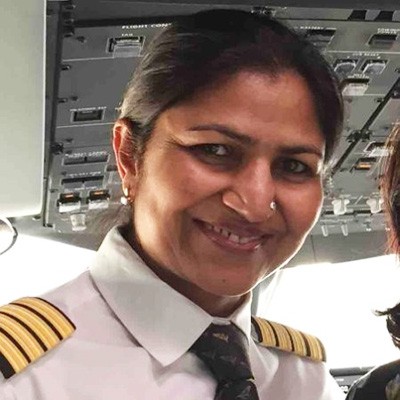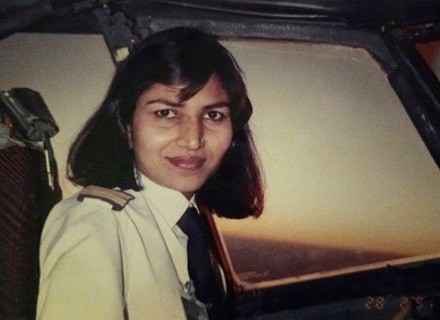In 1989, Nivedita Bhasin became the youngest commercial airline captain in the world, but the Indian pilot vividly remembers those formative years when other crew members would nudge her into the cockpit so that passengers wouldn’t feel uneasy seeing a woman piloting their aircraft.
However, Indian female pilots are no longer a novelty three decades after Nivedita Bhasin’s career began, making the nation a success story in terms of diversity in the airline business.

According to the International Society of Women Airline Pilots, India has the greatest proportion of female pilots in the world at roughly 12.4% of all pilots, compared to 5.5% in the US, the largest aviation market in the world, and 4.7% in the UK.
The figures make one wonder how a country that ranked 135th out of 146 on the World Economic Forum’s list of nations for gender parity was able to buck the trend in this particular sector. Some of the responses could serve as examples for other nations and industries working to increase the representation of women.
Diverse organizations typically perform better, and some studies have even suggested that female pilots experience fewer safety problems. Additionally, while the world is recovering from the COVID-19 pandemic and demand increases, hiring more women could assist airlines in addressing the staff shortages that are causing travel delays.
Pioneers like Nivedita Bhasin claim that a number of reasons, such as outreach programs, improved company practices, and strong family support are motivating Indian women.
A 1948-formed youth program called the National Cadet Corps’ air wing, which trains pupils to fly microlight aircraft, attracted many Indian women to aviation. Some state governments are providing financial aid for the pricey commercial pilot training, and organizations like Honda Motor Co. offer complete scholarships for an 18-month program at an Indian flying school and support their employees to make it more affordable for women.
Michele Halleran, a professor and the head of diversity programs at Florida’s Embry-Riddle Aeronautical University, “India began recruiting women into STEM careers, including pilots, decades ago.”
Because of the severe pilot and technician scarcity, we are currently experiencing in the United States, the desire for a diversity movement in aviation has just begun.
Due to airline markets in nations like the US being significantly larger and having larger overall personnel of both men and women, the absolute numbers of women pilots still tend to be higher there than in India.
The continuous shortage of pilots and airport staff, which is causing airlines to curtail and cancel flights and endangering to snarl the aggressive traffic resurgence, can be alleviated by hiring more women. Over the next 20 years, the globe will require more than 600,000 more pilots, according to Boeing Co.
According to a research titled Gender Differences In General Aviation Crashes, which examined data on helicopter and airplane crashes between 1983 and 1997, male pilot crash rates were higher than those of female pilots.
Women in Combat Arms: A Study of the Global War on Terror examined the accident rates of male and female pilots from 2002 to 2013, finding that women “fly aircraft more safely,” accounting for only 3% of accidents despite making up 10% of all US army helicopter pilots.

